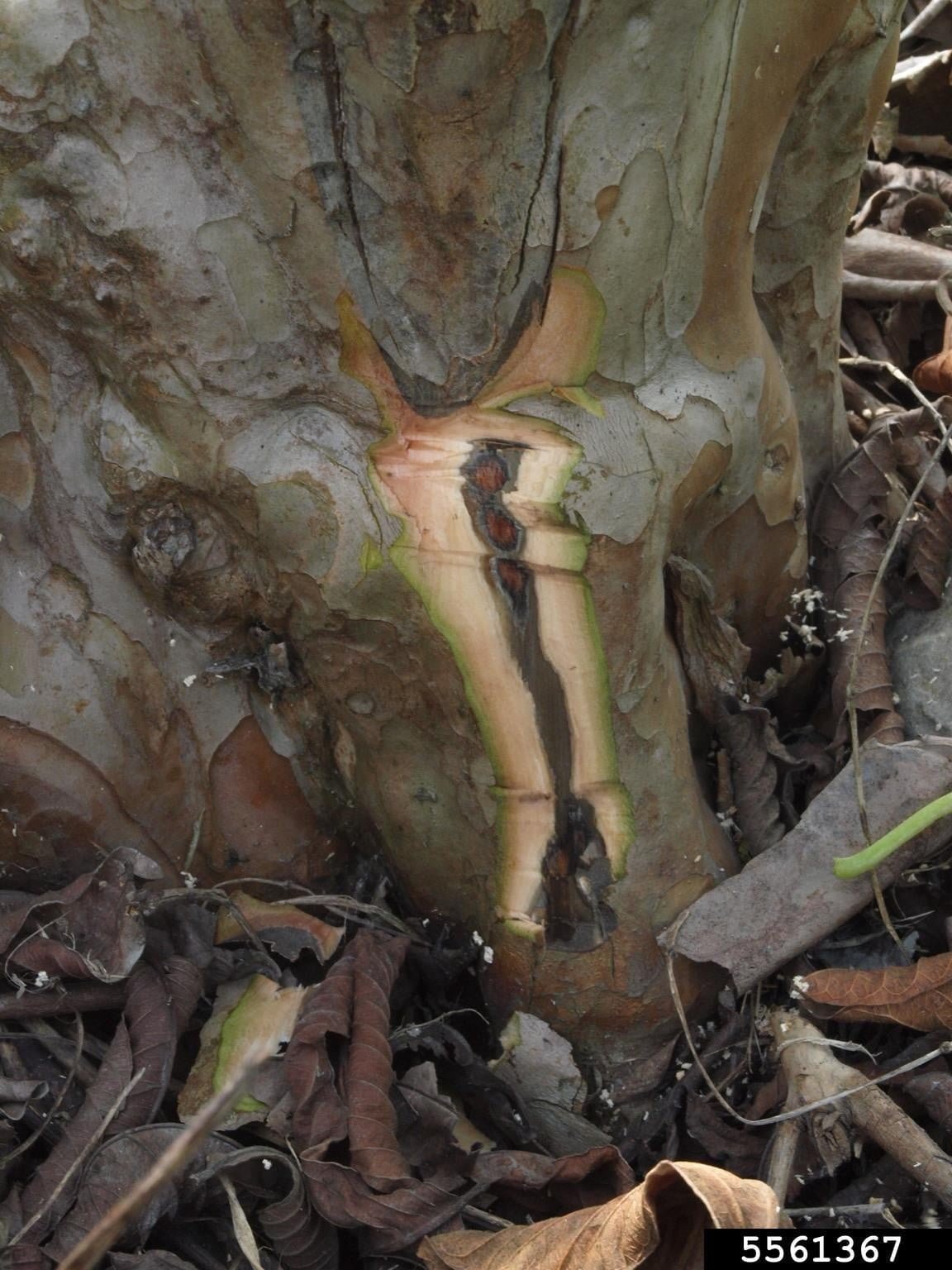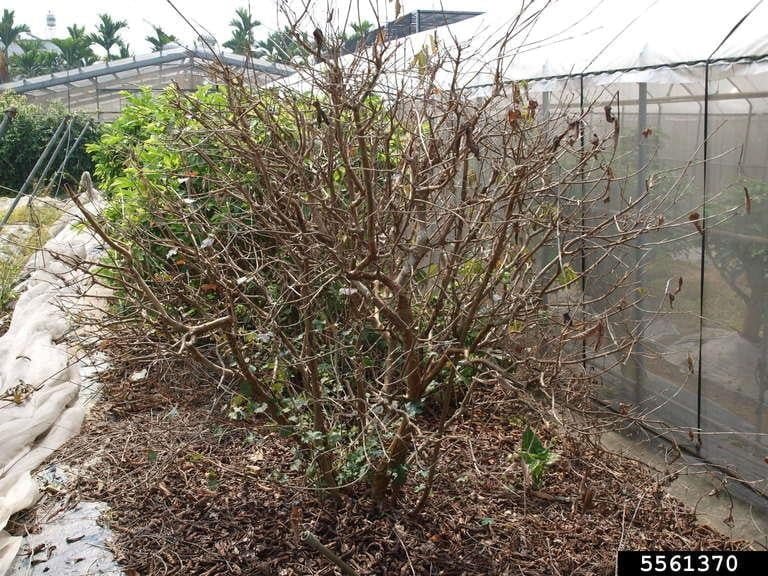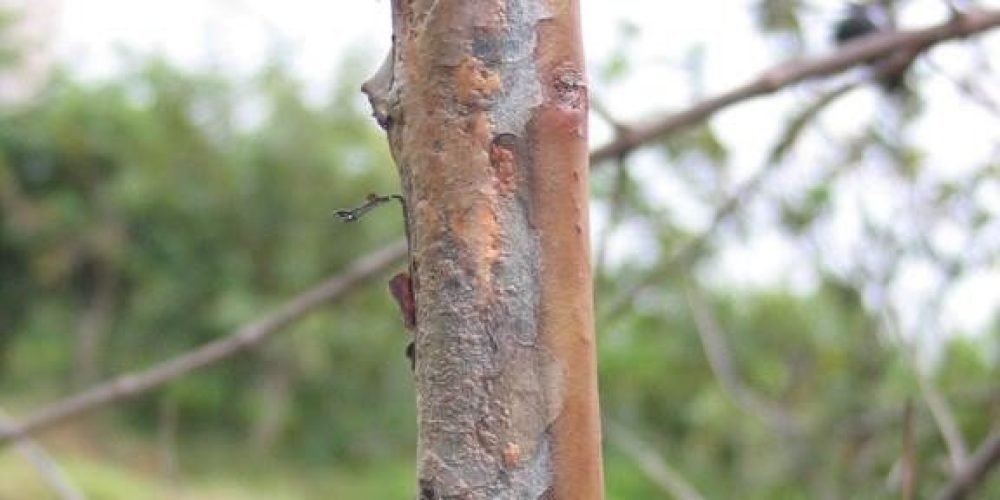English name: Guava Wilt
The scientific name: Ralstonia solanacerum Ralstonia solanacearum
The type of disease: a bacterial disease
family: Ralstoniaceae
Symptoms
Guava wilt is a devastating disease that can affect plants at any stage of growth. Initial symptoms include leaf wilting, even in wet soil conditions. Wilting usually starts from the lower leaves and progresses upward. Yellowing or browning of the vascular system can be observed when the stem is cut lengthwise. In advanced stages, the entire plant wilts, the leaves turn brown and dry, remaining attached to the plant.



Reasons
Guava wilt is caused by the soil-borne bacteria Ralstonia solanacearum, which can live in the soil for several years and infect a wide range of plant species.
Propagation conditions
The bacterial pathogen thrives in warm, humid conditions with temperatures ranging from 68°F to 95°F (20°C to 35°C). It can be spread through contaminated soil, water, or infected plant material. Bacteria can also be transmitted by root-to-root contact or through wounds caused by pruning or cultivation tools.
Disease course
Wilt bacteria can survive in soil or on plant debris for several years. When soil conditions are favourable, bacteria enter the plant through the roots or wounds and colonize the vascular system. Once inside the plant, bacteria produce extracellular sugars that clog water-conducting vessels, leading to wilting and eventual death of the plant. Bacteria can also spread from infected plants to healthy plants through contact with contaminated roots or tools.
losses
It can cause guava to wilt In losses Significant economic due to low fruit yield, early plant death, and the cost of implementing control measures. In severe cases, entire orchards may need to be removed and replanted.
Control strategy
An integrated approach including cultural practices, resistant varieties and soil management is recommended to control guava wilt.
Preventive measures
Plant resistant or tolerant varieties, practice crop rotation, ensure proper soil drainage, and avoid introducing contaminated soil or plant material into the growing area.
Organic/chemical control
There are no effective organic or chemical controls for guava wilt once the disease has established itself in the soil. However, soil solarization, application of biocontrol agents (e.g., Trichoderma spp.), and use of disease-free planting material can help reduce the risk of infection. Chemotherapy with antibiotics or bactericides is generally not recommended due to their limited effectiveness and potential environmental effects.
reference
University of Florida - Guava Wilt https://edis.ifas.ufl.edu/pp347( )
HD https //www.plantvillage.psu.edu/posts/69715/images Image link



